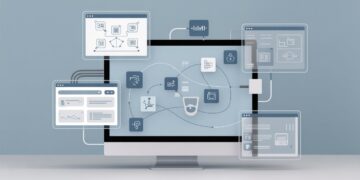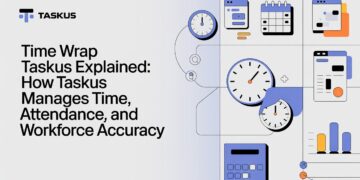In today’s data-rich business landscape, organizations face the challenge of extracting meaningful insights from the vast amounts of information available to them. Business Intelligence (BI) has the ability to empower organizations to transform raw data into actionable knowledge. Intellicus has the capability to allow you to use business intelligence tools in your software applications and transform how your users interact with enterprise data.
Embedded BI is the integration of business intelligence capabilities directly into another business software or application, such as customer relationship management (CRM) systems, enterprise resource planning (ERP) platforms or even websites. Unlike traditional Business Intelligence tools that require users to switch between different applications, embedded BI brings analytics and reporting capabilities to the forefront of users’ workflows. This makes data insights readily accessible within familiar interfaces.
Improve data usability and decision-making by integrating with Intellicus business analytics real-time reporting and leverage interactive dashboards and AI and Machine Learning driven insights.
Traditional BI can create repetitive standalone reports with users having to switch between their application and a separate analytics platform constantly to extract insights. Such an arrangement leads to delays, reduced efficiency and lower user adoption.
Benefits of Embedded Business Intelligence
- Enhanced Decision Making – By embedding BI into operational applications, organizations empower users across various departments to make informed decisions based on real-time data. Managers can access relevant analytics within their systems, enabling them to evaluate sales performance, customer behavior and other crucial metrics without having to navigate through separate BI tools.
- Improved User Adoption – Embedded BI eliminates the need for users to learn and switch between multiple applications, thereby reducing training time and increasing user adoption rates. Employees can access analytics and reports within the context of their daily tasks, making it easier for them to embrace data-driven decision-making. Another reason there is a high degree of user adoption is that embedded BI puts dashboards and analytics into the applications users are already working with and so, users do not need to use multiple applications simultaneously.
- Increased Efficiency and Productivity – With embedded BI, users can seamlessly analyze and visualize data within their familiar work environments. They can create custom dashboards, reports and visualizations tailored to their specific needs, saving time and effort. Furthermore, self-service capabilities enable users to explore data independently, reducing their dependency on IT or data analysts.
- Accessibility across the Organization – Embedded BI makes insights more accessible to everyone no matter their expertise or technical capabilities. Additionally, within interactive dashboard visualization, features such as drill-down, filtering and search are available to users. This enables end-users to interact with their data with ease.
- Scalability and Flexibility – Embedded BI provides organizations with the flexibility to scale their analytics capabilities as needed. Since BI functionality is embedded within existing applications, companies can leverage their existing infrastructure and expand analytics features without significant disruptions or additional investments.
- Improved Collaboration and Communication – Embedded BI promotes collaboration by providing shared access to data and insights within applications. Users can share reports, visualizations, and data-driven findings with colleagues, facilitating collaborative decision-making and fostering a data-driven culture across the organization.
- Enhanced Customer Experience – Embedding BI within customer-facing applications, such as online portals or mobile apps, allows organizations to deliver data-driven insights directly to their customers. This enables self-service analytics and reporting, empowering customers to make informed decisions and gain deeper insights into their interactions with the organization.
- Streamlined Workflows and Increased Efficiency – By integrating BI functionalities into existing applications, embedded BI streamlines workflows, eliminates data silos and reduces the time and effort spent on data extraction and analysis. Users can access and manipulate data within their preferred application, creating custom dashboards and reports that align with their specific needs. This streamlined process boosts efficiency and productivity throughout the organization.
Challenges and Considerations
While embedded BI offers numerous benefits, its implementation requires careful consideration. Some key challenges to address include:
- Data Security – Embedding BI within applications requires the implementation of stringent data security measures to protect sensitive information. Data access controls, encryption and secure authentication mechanisms are crucial to ensure the confidentiality and integrity of data.
- Integration Complexity – Integrating BI functionality into existing applications can be technically complex, depending on the underlying architecture and data sources. Proper planning, collaboration between development and BI teams and adherence to best practices are essential for successful implementation.
- User Interface Design – Designing intuitive and user-friendly interfaces within existing applications is crucial to encourage adoption and enable users to effectively leverage embedded BI capabilities. A well-designed interface should present data in a visually appealing and easily understandable format.
Conclusion
By seamlessly integrating analytics and reporting capabilities into existing applications, organizations empower users at all levels to leverage data insights for improved decision-making, enhanced productivity and competitive advantage. However, careful consideration of security, integration complexities and user interface design is necessary for successful implementation. As the demand for real-time insights continues to grow, embedded BI will play an increasingly pivotal role in shaping the future of business intelligence.
Also, Read 45.743.633 LTDA Ecoseg – Consultoria, Gestao e Treinamentos.


















